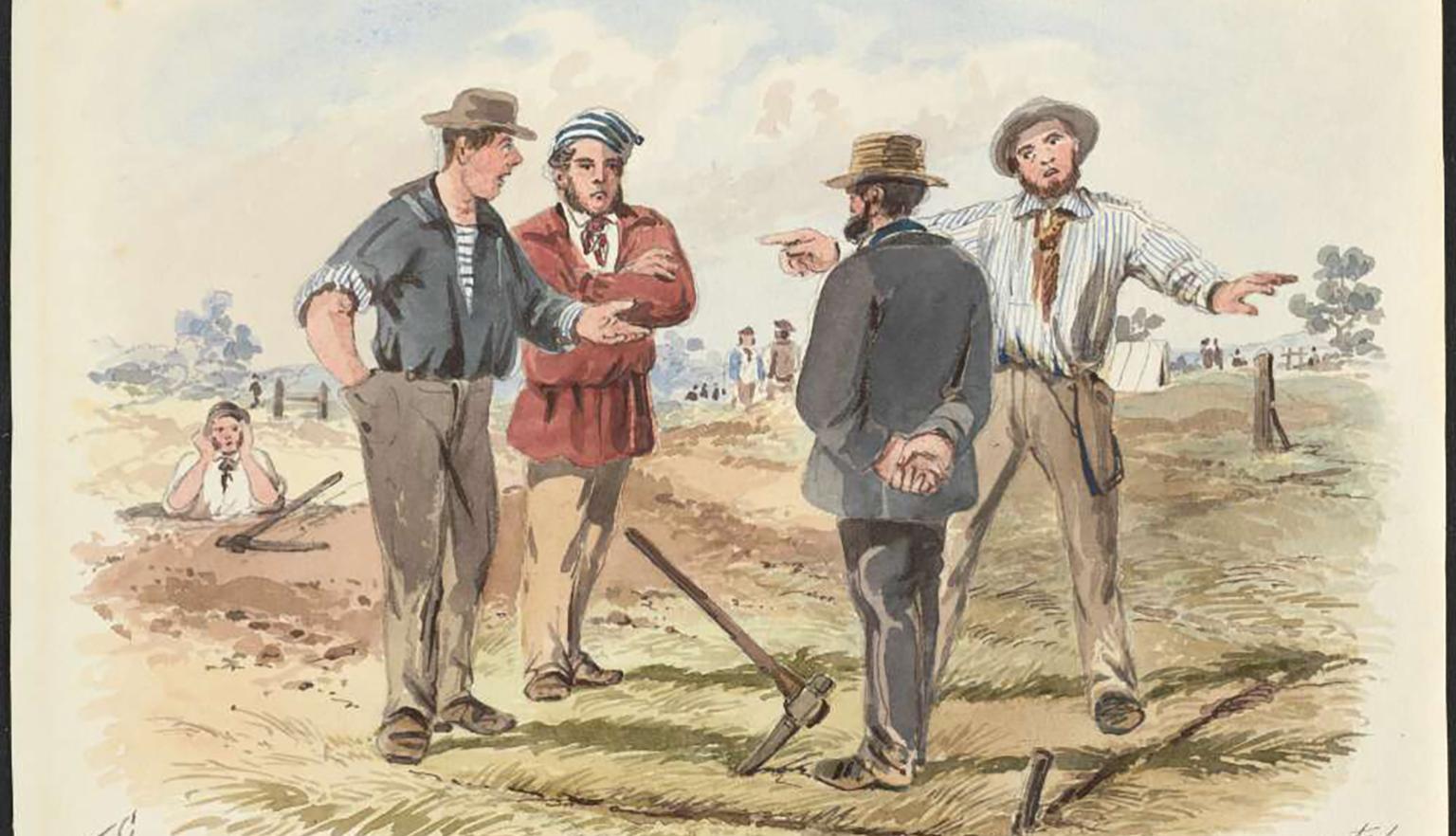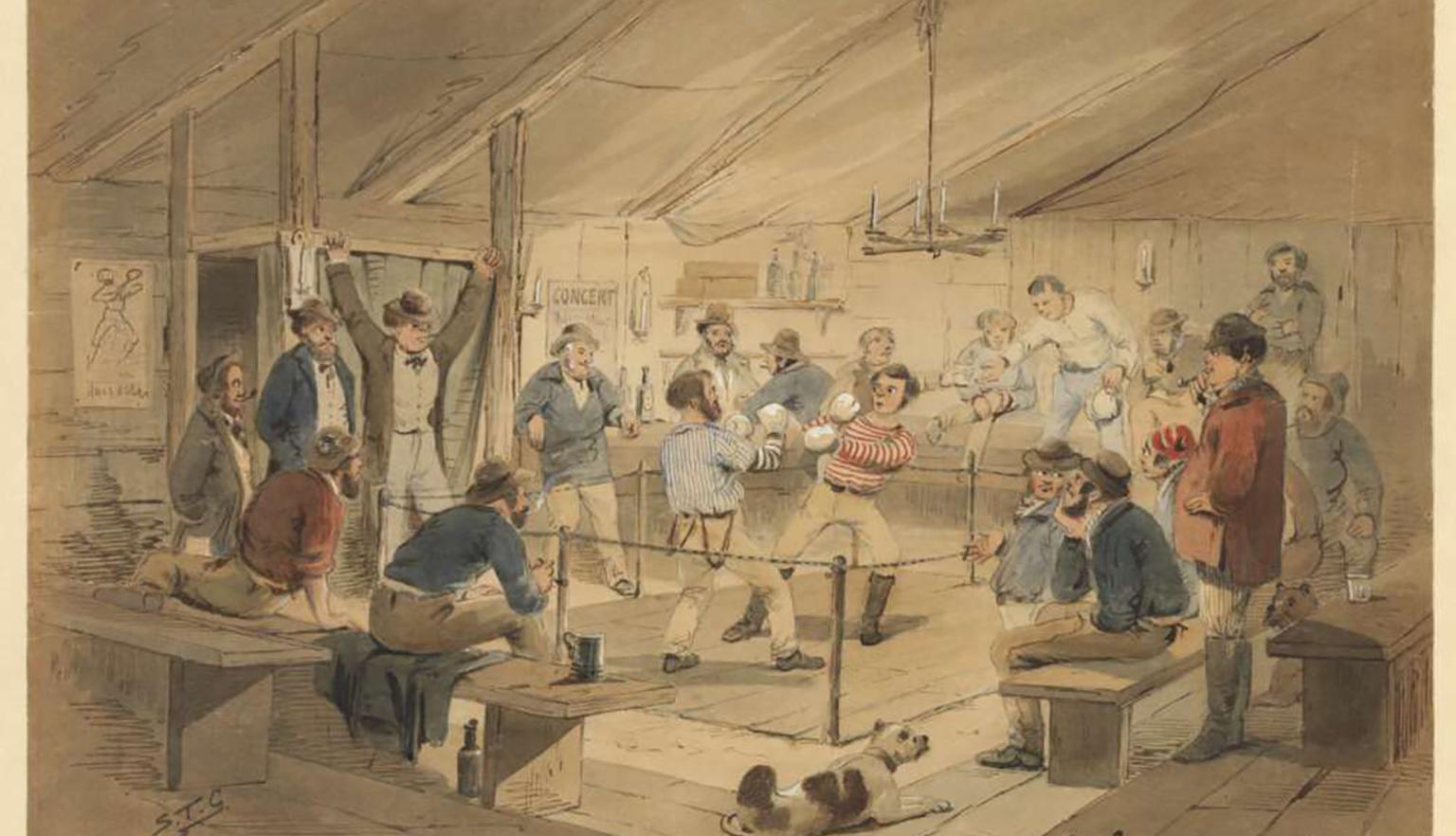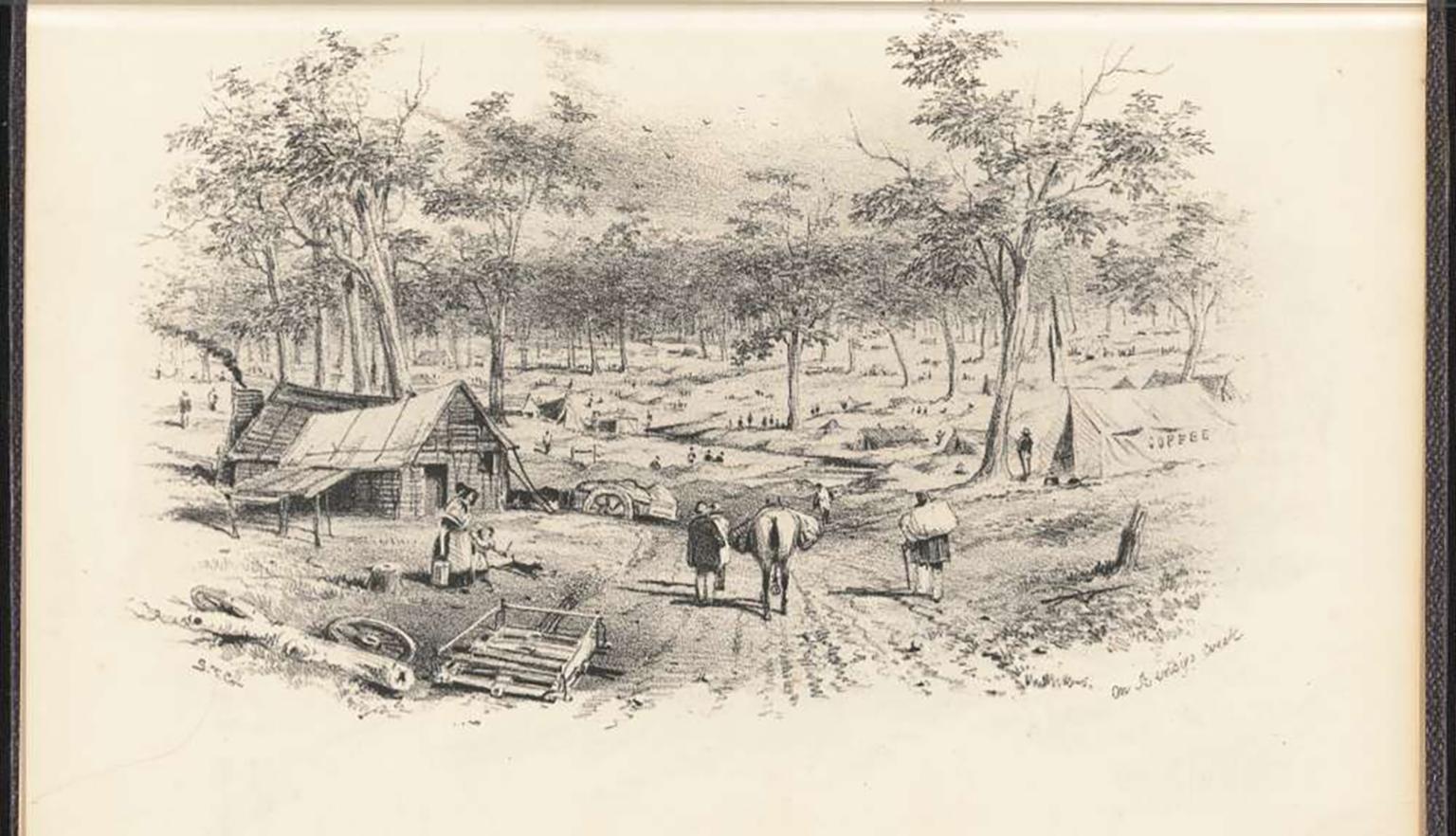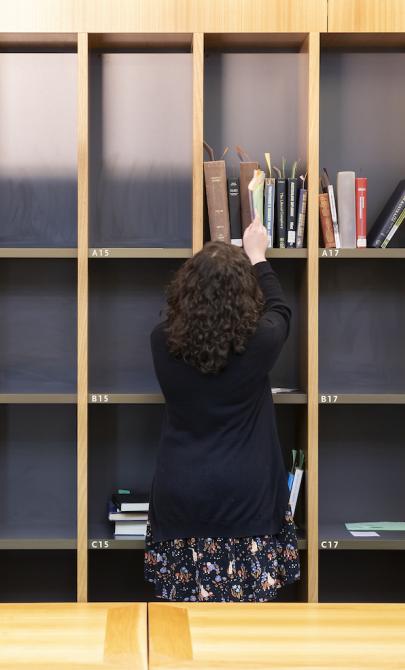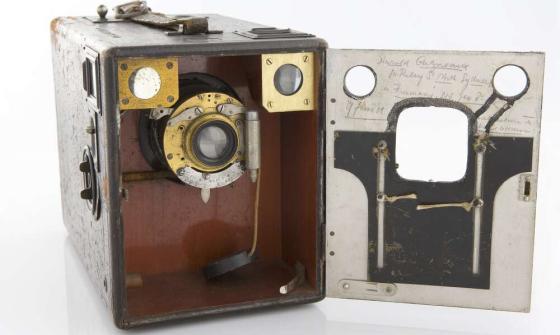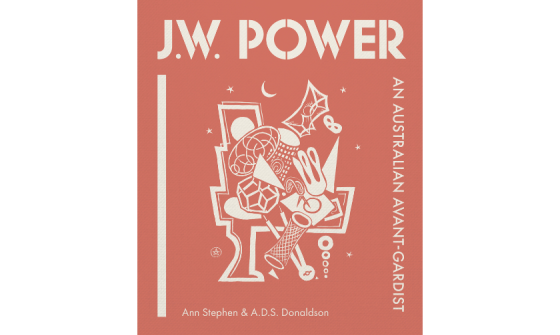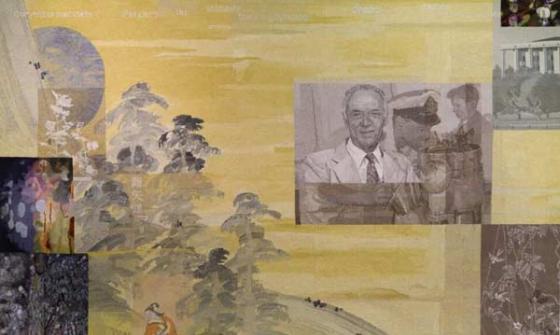Gill Collection
Collection highlights
Key items in the collection
The collection includes 95 watercolours and about 80 wash, sepia wash, or pencil drawings by S.T. Gill. There are also many lithographs, chromolithographs, and engravings based on his paintings and sketches.
Most of the original works are from 1841 to 1852, when Gill lived in South Australia. These pieces often show scenes of Adelaide, including the barracks, courthouse, Frome Bridge, jail, Government House, hospital, churches, North Terrace, the racecourse, and the wharves at Port Adelaide. There are also views of towns like Burra, Mount Barker, and Mount Gambier, as well as rural areas like Clare, Kapunda, and Mount Remarkable. Some of these works were created during the Horrocks expedition to Spencer's Gulf and the Flinders Ranges in 1846. Gill’s subjects include cattle drovers, emus, grass trees, life inside a settler’s hut, kangaroo hunting, stockmen, racehorses, and woodcutters. Many paintings also feature Aboriginal people hunting, taking part in corroborees, or working alongside stockmen and explorers.
There are a small number of paintings and drawings of the goldfields at Ballarat and Mount Alexander (Castlemaine). They are complemented by plates from Gill’s books on the goldfields. Other Victorian works depict the Royal Arcade in Melbourne, the Yarra River, Port Phillip Bay, falls on the Wannon River, the lighthouse at Queenscliff and bushmen hunting in Gippsland. Titles include:
- Claim Disputed
- Concert Room, Charlie Napier Hotel, Ballarat
- Diggers en Route to Deposit Gold
- McLaren’s Boxing Saloon, Main Road, Ballarat
The final group of original works date from 1856–62, when Gill was living in Sydney. The subjects include:
About Samuel Thomas Gill
Samuel Thomas Gill (1818–1880) was born in Perriton, Somerset, England, to an amateur artist. He was educated in Plymouth, attending his parents’ school and later Dr. Seabrook’s academy. Gill worked as a draftsman and painter for the Hubbard Profile Gallery in London before moving to South Australia with his family in 1839. In Adelaide, he set up a studio, where he painted street scenes and landscapes, while also taking an interest in the colony’s interior and Aboriginal communities. In 1846, he joined J.A. Horrocks on an expedition to Spencer’s Gulf, creating artworks that were later featured in Adelaide's first art exhibition in 1847.
Artistic success and recognition on the goldfields
After being declared bankrupt in 1851, Gill travelled to the Victorian goldfields in 1852, where he quickly produced a series of watercolours and wash drawings that received praise when exhibited in Melbourne. A skilled lithographer, he created two notable series: Victorian Gold Diggings and Diggers of Victoria as They Are (1853) and The Diggings and Diggers of Victoria as They Were in 1852 (1854). His work captured the essence of the gold rush, earning him recognition as the leading artist of the time, with his pieces even being pirated in England and Europe.
Later years and decline
In 1856, Gill moved to Sydney, producing works like Scenery in and around Sydney and painting homes for wealthy clients. As his financial situation worsened, he turned to newspaper illustration work. He returned to Melbourne in 1862, publishing The Australian Sketchbook in 1865, and was later commissioned to create 40 watercolors of the goldfields. Despite his artistic achievements, Gill's final years were marked by alcoholism and poverty, and he died in obscurity.
Background to the collection
The earliest acquisition of ST Gill's paintings and drawings was a purchase of 27 works from W.A. Bell in London in 1932. In 1954, Queen Elizabeth II gifted 13 sketches by Gill and Charles Sturt to the Australian Government, and they were added to the collection. The Nan Kivell Collection, bought in 1959, holds 86 of Gill’s original works, making up about half of the total collection. Most of the other works by Gill were acquired through auctions or art dealers, with the most recent purchase in 2004.
ST Gill’s paintings, drawings, and prints are part of the Pictures Collection. Most of these works have individual catalogue entries, and many are available in digital format.
Gill’s lithograph books are housed in the Australian Collection. Loose plates from these and other publications are also found in the Pictures Collection, including:
ST Gill’s paintings, drawings, and prints are held in various galleries and libraries, including the Art Gallery of New South Wales, the Art Gallery of South Australia, the Ballarat Fine Art Gallery, the Castlemaine Art Gallery, the La Trobe Library (State Library of Victoria), the Mitchell Library (State Library of New South Wales), the National Gallery of Victoria, and the Queensland Art Gallery.
This guide was prepared using these references:
- Keith Macrae Bowden, Samuel Thomas Gill: Artist, K.M. Bowden, Sydney, 1971.
- Geoffrey Dutton, S.T. Gill’s Australia, Macmillan, Melbourne, 1981.
- Shar Jones, Samuel Thomas Gill, in Joan Kerr (ed.), The Dictionary of Australian Artists, Oxford University Press, Melbourne, 1992, pp. 296–8.
- EJR Morgan, Samuel Thomas Gill (1818–1880), Australian Dictionary of Biography online
